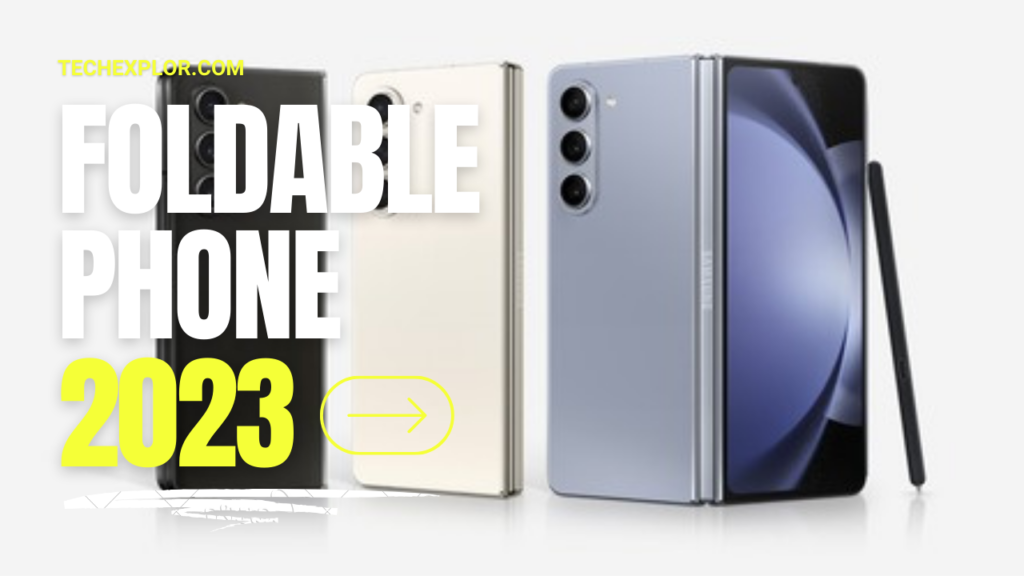In recent years, foldable smartphones have made waves in the tech world, presenting a unique concept that pushes the boundaries of what mobile devices can do. Initially viewed as a futuristic idea, foldable phones have become increasingly popular, with tech giants like Samsung, Huawei, and Xiaomi leading the charge. However, despite their flashy designs and impressive features, the question remains: are foldable phones truly worth the investment in 2025?
Let’s explore the various aspects of foldable phones today to help answer this question.
1. Design & Display Technology
The hallmark feature of foldable phones is their ability to offer a larger screen while remaining compact enough to fit in your pocket. Foldable devices feature a flexible OLED or AMOLED display that allows them to open up into tablet-sized screens, giving users an immersive experience on the go. By 2025, manufacturers have made significant strides in both design and display technology.
One of the most noticeable improvements is the reduction of the visible crease in the foldable screen. In earlier models, the crease where the device folds was highly noticeable and detracted from the overall experience. However, in 2025, brands like Samsung and Huawei have refined their hinge technology, making the crease much less visible and, in many cases, practically unnoticeable. These advancements have made foldable screens much more enjoyable for watching videos, playing games, and multitasking.
Additionally, display quality has improved, with foldable devices now boasting higher resolution, brighter screens, and better color accuracy. Some of the latest foldable phones even feature ultra-thin glass or improved polymer-based materials, making them more durable and resistant to scratches and damage.
2. Durability: Stronger Than Ever
Durability has always been a major concern with foldable phones. The initial iterations of foldable devices were often criticized for being fragile, with the folding mechanism and screen prone to wear and tear. However, in 2025, foldable phones have come a long way in terms of build quality.
Manufacturers have enhanced hinge designs to ensure smoother opening and closing with less strain on the screen. These new hinges are tested for thousands of folds, giving users confidence in the longevity of their device. Furthermore, the screens themselves are more resilient, using materials like ultra-thin glass and more advanced polymers, which are less likely to crack or scratch than earlier foldable phone screens.
While foldable phones are still generally not as durable as traditional flagships (which tend to have more robust, solid bodies), the improvements made in 2025 are enough to make foldable phones much more practical for everyday use. Many foldable devices also feature improved water and dust resistance, a critical factor that was previously lacking.
3. Performance: A Powerhouse in Your Pocket
Foldable phones have come to a point where performance is no longer a concern. The devices on the market in 2025 come equipped with the latest processors, such as Qualcomm’s Snapdragon 8 series or Apple’s A17 Bionic chip, ensuring that they can handle everything from demanding apps to mobile gaming. Multitasking, which is one of the core benefits of a foldable device, works seamlessly on these phones, with multiple apps being able to run side-by-side on the large screen without any noticeable lag or slowdowns.
In addition to the powerful processors, foldable phones in 2025 are equipped with ample RAM and fast storage options. As a result, users can expect smooth performance even when juggling several apps at once or working on professional-level tasks like video editing or graphic design.
4. Battery Life: Still Room for Improvement
One of the drawbacks of foldable phones in earlier models was their relatively poor battery life. The combination of large, high-resolution displays and the mechanical folding mechanism meant that batteries often couldn’t keep up with the demands of the device.
While battery life has improved in 2025, it’s still somewhat of a trade-off. The larger screens and foldable nature of these devices can still cause battery drain, particularly if you’re using both the main display and the secondary screen simultaneously. However, manufacturers have made improvements in battery optimization, and foldable phones in 2025 are more efficient than ever. With fast charging and wireless charging becoming the standard, most foldable phones are designed to last a full day of regular use, though heavy usage may require a mid-day charge.
5. Price: Still Premium, But More Accessible
One of the most significant barriers to entry for foldable phones has been their high price. At the outset, foldable devices were far more expensive than their non-folding counterparts, and in 2025, they still carry a premium price tag. While prices have gradually dropped over the years, foldables are still generally more expensive than standard smartphones.
However, as competition grows and technology advances, we may see more affordable foldable models hit the market. Samsung’s Galaxy Z Flip, for example, has been one of the more affordable options in the foldable space, and similar devices from other brands are likely to emerge. While you can expect to pay a premium for a foldable phone in 2025, the cost is becoming more justifiable for those who want a device that offers something unique and innovative.
6. Software and Multitasking: A New Way to Work and Play
One of the most attractive aspects of foldable phones is the ability to run multiple apps at once, thanks to the large screen. Whether you’re using the device for work or entertainment, multitasking is a breeze. The ability to open multiple windows, run apps side by side, or even use one app in two different modes on the unfolded screen creates a productivity powerhouse that regular smartphones can’t match.
In 2025, Android and other mobile operating systems have continued to evolve, improving app compatibility with the foldable form factor. Developers have also begun optimizing apps specifically for foldable devices, making sure users get the best experience possible. For business professionals, creators, and multitaskers, a foldable phone can significantly enhance efficiency and usability.
Conclusion: Are Foldable Phones Worth It in 2025?
The foldable phone market has come a long way since its early days, with improved design, performance, and durability. While these devices are still considered premium products, the value they offer—especially for users looking for more screen space and multitasking functionality—makes them a compelling option.
However, whether a foldable phone is worth the investment in 2025 ultimately depends on your needs. If you’re looking for something innovative and versatile, a foldable device might be the perfect fit. But if you’re simply after a high-performing smartphone at a lower price point, traditional flagships still offer excellent performance and value.
In the end, foldable phones in 2025 are certainly worth considering, especially for tech enthusiasts, professionals, and anyone who wants the latest and greatest in mobile technology. But for the average consumer, it may still be a matter of balancing the price and the unique features that these devices offer.




I thank for very valuable information. It very much was useful to me.
Absolutely with you it agree. Idea excellent, I support.